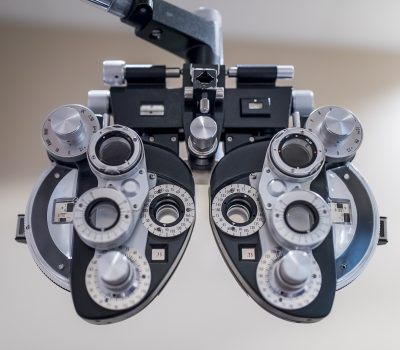What is blepharitis and how is it treated?

Blepharitis is an eye condition that can appear in children and adults of any age (although it most commonly affects people over 40), with both eyes usually being affected at the same time. It is a relatively common condition (thought to account for about 1 in 20 eye problems in Australia), and while not necessarily serious in itself, it can lead to other eye conditions.
If you have blepharitis, the margins of your eyelids become inflamed, possibly producing a number of different symptoms:
- Itchiness
- Being overly sensitive to light (photophobia)
- A constant feeling that you have something in your eye
- Excessive blinking
- Sticky, greasy or crusty eyelashes, especially in the morning
- Excessive tears, or frothy tears
What causes blepharitis?
Blepharitis is most often caused by inflammation of the eyelid glands and follicles. It can appear either at the front (anterior) or back (posterior) of the eyelid margins.
In some cases, it can be associated with a skin condition like Rosacea.
How is blepharitis diagnosed?
If you have any of the symptoms described above, you should visit an eye specialist to have your eyes checked. You will need to share your medical history and any health issues you may have, as this may impact on your treatment.
Your ophthalmologist can carry out a number of tests to determine whether you have blepharitis. Your vision will be tested and your eyes will be assessed using a slit lamp (a microscope especially designed for examining eyes) to determine the extent of the inflammation.
If there is any unusual inflammation, or the condition does not respond to treatment, further tests may need to be undertaken. This could include a recommendation that a biopsy be taken.
How is blepharitis treated?
The mainstay of treatment is to maintain eyelid hygiene. Your ophthalmologist is likely to recommend an eye cleaning routine as the best means of ensuring ongoing eye health. This might include:
- Regular massaging of the eyelid toward the margin;
- Cleaning the eyelid with a tissue, cotton bud or eyelid wipe, and using warm water or a special
eyelid cleaner; - Applying a warm compress to the eyelid margin in order to loosen any crust that forms.
Depending on the response, the treatment may need to be carried out as an ongoing process to control the symptoms effectively.
During blepharitis treatment, your ophthalmologist may also advise you to avoid eye irritants such as cosmetics. You might also be prescribed antibiotics and anti-inflammatory medications depending on the severity of the condition.Dry eyes due to suboptimal functioning of the oil glands in your eyelids, is very commonly associated symptom and you might be advised to use lubricating eye drops as a treatment.



